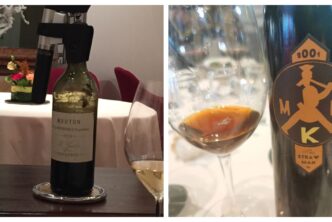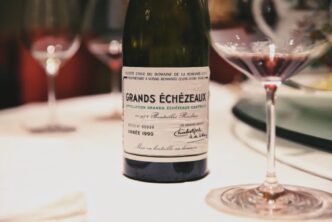Cà del Bosco 2002 Pinero del Sebino Lombardy 93

Frankly speaking, not too many Pinot Noir wines from Italy are particularly noteworthy. Most of those that are fruit-challenged have to rely on oak to offer anything vaguely sexy or interesting, while those made from warmer areas such as Tuscany boast little of the refinement and nuanced fruit of the world’s best cool climate Pinot Noir wines. There are exceptions of course, with a few wines from the Italy’s north (Valle d’Aosta, Lombardy, Piedmont, and Alto Adige) that have managed to put a smile on the face of wine lovers over the years (Marco Martin/Lo Triolet, Bruno Gottardi, Carlotto, Hofstatter…) but even those wines are often irregular in the quality they deliver year in and year out. One Italian Pinot Noir wine that has always delivered the goods is Cà del Bosco’s Pinero; while early vintages were never shy with regards to a lavish use of sexy new oak, there was also much more fruit present than was common in most Italian Pinot Noir circles. And more recent vintages have increasingly shown better balance and depth, possibly in relation to the increased age of the vines. The 2002 Cà del Bosco Pinero is a case in point, straddling the fence separating the “new wave-oaky” from the “more balanced” wines.
Medium red-ruby with a hint of garnet at the rim. The well-developed, tertiary nose is quite deep and very interesting, offering nuanced aromas offer hints of red cherry, underbrush, cloves, orange peel and camphor. Then fresh and pure, with earthy notes complementing the dusty red and dark berry flavours. The aftertaste is very long and juicy, hinting at sweet pipe tobacco. The 2002 Pinero, made in a horrific year for Italian wine as it rained all the time (though parts of Lombardy were amongst the most spared) boasts surprising complexity and fruitiness and is a runaway success. There’s nothing to gain with further extended cellaring as this is drinking perfectly right now and won’t improve past its present apogee, so drink up and enjoy. Really, this is an eye-opening Italian Pinot Noir wine. Nicely done. Drinking window: 2024-2030.
Hugel 2011 Gewurztraminer Grossi Laue Alsace 93

Grossi Laue is a German term that means “great growth”, as in the sense of “top or first growth”; in other words, a very good site that has a prestigious history, and that, at the very least, ought to have the potential (in competent hands) to give outstanding wines. It is the term that the Hugel family began using in 2010: The Grossi Laue wines are made from specific plots of vines located in hallowed, world-famous grand crus such as the Sporen and the Schoenenbourg. And it is with grapes picked from roughly thirty years old vines planted in the decalcified clay-marl soils of the Sporen (arguably the best Gewurztraminer vineyard in Alsace) that the delicious Hugel 2011 Gewurztraminer Grossi Laue Alsace is made.
Luminous pale golden-yellow colour. Rich and ripe on the nose, that boasts very intense aromas of sweet spices, papaya, mango and grapefruit, complemented by a string note of clover honey. Then also honeyed in the mouth, with flavours of candied tangerine peel, fresh mango, and banana lifted by strong spicy notes of cloves and cinnamon. Finishes very long and luscious, with soft acidity that leaves a mellow, round mouthfeel behind with just a trace of alcohol-derived heat. This concentrated, rich Gewurz is rather medium-sweet in taste than off-dry, a sweetness that the soft acidity brings to the fore (the only 4.4 g/L total acidity makes the only 20 g/L of residual sugar stand out more). Best to drink this up on the early side for maximum enjoyment, say within the next eight to ten years. Try it with tajine, spicy pork or chicken pilaf and curries, a spicy version of coq au vin, any salmon or tuna steak with chutneys or citrus-accented sauces and aged cheeses. Drinking window: 2024-2033.

 English
English

